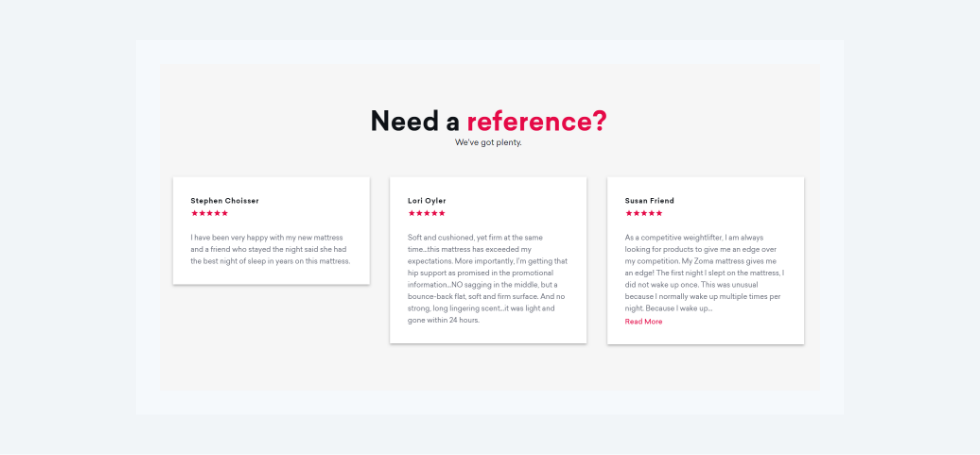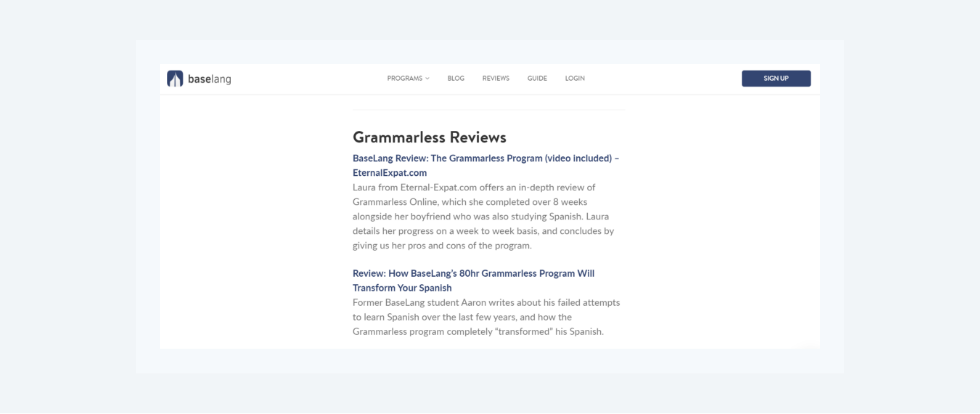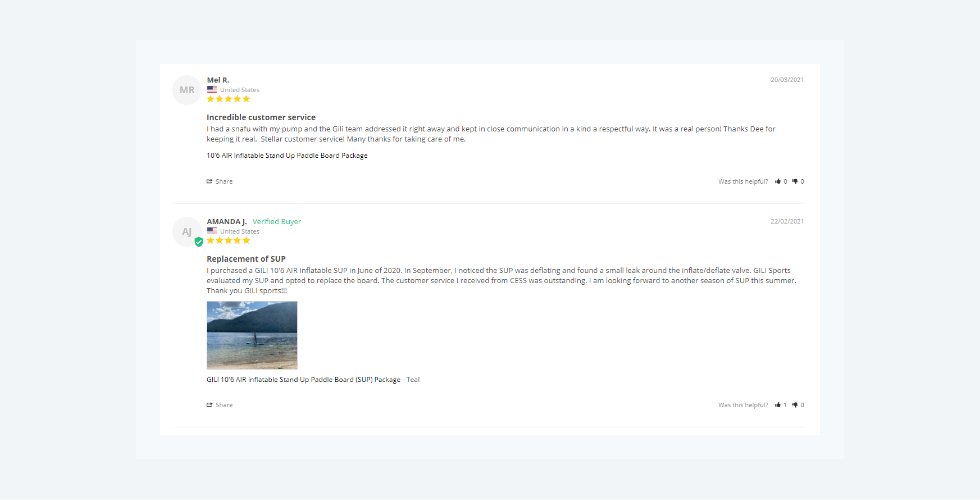Creating many channels of communication with your customers is absolutely critical to running a successful online business. And, there are so many excellent reasons for that.
When you’re in the throes of keeping your business profitable through difficult times, dealing with the challenges of managing a remote workforce, creating, nurturing, and converting leads, solving technical issues, and developing new features, it can be super easy to deprioritize something as “soft” as customer interaction. However, there’s something that many business owners forget. Throwing yourself headlong into meaningful conversations with your customers often addresses these operational issues directly – and in a very positive way.
Taking customer feedback seriously and soliciting it isn’t a silver bullet for every challenge your company is going to face, but when it comes to managing these challenges, customer feedback plays a much bigger role than many founders think.
A great way of approaching customer interaction is to understand that every single thing you do, every decision you make, every feature you develop, every marketing message you conceptualize and broadcast is for the ultimate benefit of your customers. So why not let them play a material role in your daily decisions?
Let’s take a look at four areas where customer feedback can be leveraged to benefit your company.
Table of Contents
- Create general brand credibility
- Generate emotions and FOMO
- Product development and feature prioritization
- Customer support and retention
- Some final thoughts
Create general brand credibility
Testimonials are one of the most obvious ways to use customer feedback for your brand’s benefit. Building credibility is one of the cornerstones of modern digital commerce. Prospective customers love seeing their peers say positive things about a company that sells something they’re interested in.
In the e-commerce space, this goes beyond simply affirming the quality of your products. It creates confidence that fulfillment will happen without a hitch. It gives the prospective customer a sense of certainty. That they will be listened to if they have a problem with their purchase. In the SaaS world, it creates a different kind of confidence outside of the marketing promises you make about the product itself. Perhaps they’ll feel comfortable that you won’t make it impossible to unsubscribe. They’re confident that there will be support staff on-hand to help them get the most out of their subscription.
Using testimonials smartly is about addressing as many of your customers’ unspoken concerns as possible. A great way to do this is to simply ask a satisfied customer to write what they thought about your delivery process or how effective they found your technical support. Pick the best responses – the ones that create a positive impression while at the same time sounding sincere. Publish them prominently on your website.
Zoma does a great job of this on their memory foam mattress page. A very neat scrolling UI element displays honest, candidly written feedback that focuses on the product as well as peripheral issues like delivery.

We can also find a great example from BaseLang, who took a different route with their testimonials. Rather than showing snippets of feedback on their home page, the language-learning platform dedicates an entire page to providing links to highly detailed, externally hosted reviews of their service.

For BaseLang, transparency is everything. They want their prospects to see the bad with the good, so they don’t hide criticism. And that’s something that goes a long way in establishing genuine trust.
Generate emotions and FOMO
This application of user feedback is especially feasible where “fear of missing out” plays a vital role in triggering conversions. Sure, user reviews displaying star ratings and a customer’s brief thoughts go a long way towards nurturing a lead. But, few things nudge the mouse pointer towards the “add to cart” button more effectively than generating emotions about the product.
The genuine value you’ve brought to the lives of your customers is proportionate to the perceived value it could bring to the lives of your site visitors. And, if done correctly, this message could trigger a very powerful emotional response. The fear of missing out on something awesome.
FOMO isn’t just something kids used to say to help them make a terrible decision. There’s actually some real research behind it and the role it plays in consumer decision-making. People want to keep up with their friends, and they’re not scared to be impulsive about it.
A terrific application of combining customer feedback and FOMO is to do what online paddleboard store Gili Sports does on their various product pages.
Rather than going the broad testimonial route, Gili gets super specific, urging satisfied customers to upload pics of them enjoying their awesome purchase out in the great outdoors. Gili clearly knows its target audience.

They know that their prospective customers will be more triggered by seeing imagery of something they love doing. They know that this visual, emotional approach is way more effective at prompting a conversion than any number of words or 5-star ratings could ever be.
By allowing their customers to show off in their reviews, Gili brings the feelings. And feelings sell – here’s the science.
This is one example of how to generate emotions and FOMO. When considering ways you could do this for your brand, think about what emotions will resonate with your target audience. Understand their pain points and how those pain points make them feel. Then try to address these specific issues through your customer reviews.
Product development and feature prioritization
Let’s take a step away from marketing and look into a completely different area of your business where customer feedback can play a critical role. In my previous career as a business analyst and product owner, I frequently came up against the twin challenges of defining feature requirements and knowing how to prioritize them. Leveraging customer feedback tools can help overcome these challenges by providing valuable insights into user needs and preferences, directly informing product development and roadmap decisions.
The default approach at the technical team was to listen to whichever business division yelled the loudest or made life the hardest for us. This only occurred to me much later, as I became aware of the importance of keeping our users satisfied. In some cases, customer needs should be prioritized over those of the sales or accounting departments.
I’m certainly not saying that this should always be the case. In-house business users have a unique insight into the company’s strategic objectives, and product features often play a crucial role in making these goals a reality. However, without customer retention and cross-selling, no one in the organization would have a job. It really is as simple as that.
James Rose, Founder of Content Snare, is a big believer in listening to customers. Especially, when considering the functional future of his SaaS product.
“We use customer feedback to drive basically everything in our SaaS business,” he told me without any hesitation. “The most obvious application is feature development,” he continues. The important part is getting meaningful feedback. That usually means getting on a call where you can dig into issues to find out what they really want.”
What methods does Content Snare use when obtaining actionable customer feedback?
“For us, feedback normally starts with a basic NPS survey. Then we ask some people to fill out longer surveys and reward them with account credit. Some of those we get on a call with. And finally, some of those become product advisors. These are our trusted customers that help us solve meaningful problems with their feedback.” It’s refreshing to see a company put so much stock in their customers’ opinions. Not only in individual, isolated interactions. They go so far as to make those with genuine insight a part of a specialist team of external advisors.
One of the major benefits of doing this is that customer feedback can be used as a counter-balance to the potential biases or agendas of internal stakeholders. And let’s not pretend we work in a world where this isn’t a risk.
Customer support and retention
This section is closely tied with the previous one. Except that I’m going to take a look at a slightly different application and the benefit of following customer feedback related to product use. The priorities of a software company’s technical team are mostly spread between fixing bugs and building new features. There’s no rule of thumb when it comes to the allocation of resources to these two vital tasks. Businesses have different cultures, budgets, priorities, and customer needs. All of these factors determine how they respond to technical support queries.
Regardless of prioritization, it’s crucial that when a technical problem is reported by a customer, their feedback is listened to with empathy and professionalism. It’s vital that your support staff dive into the conversation with enthusiasm and a sense of service.
You’re not doing the customer a favor by listening to their feedback. You are doing what they’re paying you to do. And if you do it correctly, there are some genuinely awesome benefits. Detailed feedback from the customer can be critical in determining the cause of the issue. More importantly, it shows them that you are dedicated to finding a solution.
Ensuring that there are numerous channels where customers can report technical issues or ask for support is the first step to doing this right. In some cases, where the feedback is given in a public forum, you have the opportunity to show all of your digital “onlookers” how seriously you take customer support. This is a great advertisement for your brand’s dedication to service. It’s a wonderful and inexpensive way to nurture any leads that are lurking on your social media. Leveraging robust customer support platforms adds further efficiency to this process, serving as a centralized hub for managing and responding to feedback across various channels.
If done correctly, being serious about customer feedback will go a long way to ensuring that you retain the customer who reported the issue. This is a massive cost-saver for your organization. Studies have shown that it’s up to five times cheaper to keep an existing customer than it is to find a new one.
A great way to ensure retention is to keep the customer up to date on the progress your team is making in solving their problem. It also helps if you exhibit a professional and appropriately apologetic tone. Be sorry, but don’t overdo it.
Some final thoughts
When you acknowledge the inescapable truth about the relationship between your company and its customers, it’s only logical to create channels where you can easily obtain their feedback. Consider using Qualtrics or exploring Qualtrics alternatives to gather valuable customer insights. Why not delve as deep as possible into these interactions to ensure you understand their needs correctly? Why not give everyone who pays you to use your service as loud a voice as possible?
When done smartly, the benefits far outweigh the effort of obtaining and leveraging feedback. Take this concept seriously. Build these communication channels, commit to using them appropriately, and you’ll definitely see results.







